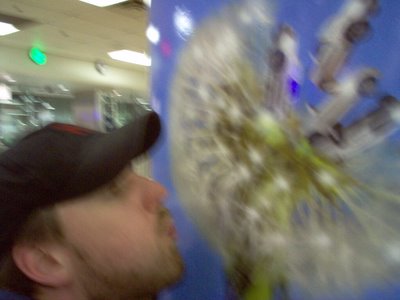BELCHERTOWN, Massachusetts (AP) -- The sun hadn't even started to rise over the Quabbin Reservoir before would-be anglers arrived for the recent opening day of fishing season, their boats lined up at its three launch areas.
A visitor looks out over Quabbin Reservoir and the area where the town of Enfield, Massachusetts, once stood.
It's a testament to the popularity of the western Massachusetts reservoir, a mecca for hikers, bicyclists, fishing enthusiasts and other nature lovers drawn to what's become known over the decades as the "accidental wilderness."
The manmade reservoir, created about 70 years ago to provide drinking water to greater Boston, has become a busy recreational, cultural and historical attraction in the midst of a region also flush with many other tourist stops.
The Quabbin Visitor Center, which looks north over the 18-mile-long reservoir, hosts a steady stream of year-round guests with questions about the region's offerings and history.
"Its reputation has really grown as a popular and beautiful spot," said Clifton Read, who heads education programs at the visitor center. "The view from here, especially from the Enfield Lookout, is really dramatic in all seasons and especially in fall."
The Quabbin, which holds up to 412 billion gallons of water, sits in what once was a valley of four rural towns. They were dissolved in 1938 and the structures that weren't hauled away in pieces by their owners were razed to make way for the reservoir.
For many travelers, a visit to the Quabbin is part of a larger jaunt to tour the region's historical sites, university campuses, museums, orchards and country stores, antique markets, bistros and ecotours.
Don't Miss
The Quabbin Visitor Center's guest book sports signatures from throughout New England and as far away as Europe. Some guests are daytrippers or weekend visitors, while others stop to explore the area while traveling between New York, Hartford, Boston and other urban destinations.
Many visitor center guests come seeking Quabbin maps and trail guides or tips on the best viewing spots for spring wildflowers, autumn leaf-peeping and bald eagles in winter.
Other visitors linger to read about the industrial marvels of the reservoir's creation, or the history of the four towns dissolved in April 1938 to make way for the freshwater lake.
Some come just for the solitude.
"It's a place of peace and serenity for us to get away from the noise of the outside world," said Robert Langlois of nearby Brookfield, visiting on a recent day with his wife, Elena, and their 8-year-old neighbor, Meghan Edwards.
The Quabbin, one of the nation's largest manmade water sources, is about 150 feet deep on average and is home to 27 species of fish.
Swimming, bonfires and camping are prohibited -- some of the measures to ensure the water's quality -- and limits are strictly enforced on the types of boats allowed and their engine sizes.
Many of the visitors pack a lunch, don their hiking boots and explore the region on foot. Among the most popular sites: the former town common at Dana, one of the four "lost towns" dissolved in 1938.
The area, reachable with a stroll of less than 2 miles on the reservoir's eastern side, is still dotted with the cellar holes, foundations and stone walls of the buildings that once populated the small town.
It's now part of the reservoir's protected watershed. Bicyclists and hikers are welcome, but motorized vehicles and domestic pets are prohibited.
For those interested in the cultural and historic roots of Dana and other area towns, the Swift River Valley Historical Society in nearby New Salem also is a popular spot.
Its headquarters -- open Wednesday and Sunday afternoons from June 1 to October 12 -- receives scores of visitors yearly seeking old vital records from the four dissolved towns along with journals, donated family mementos and other genealogical treasures.
"The area is a wonderful little piece of New England," said Elizabeth Peirce, the historical society's president and curator. "There's a great deal of interest among our visitors in learning more about a time that isn't anymore."
